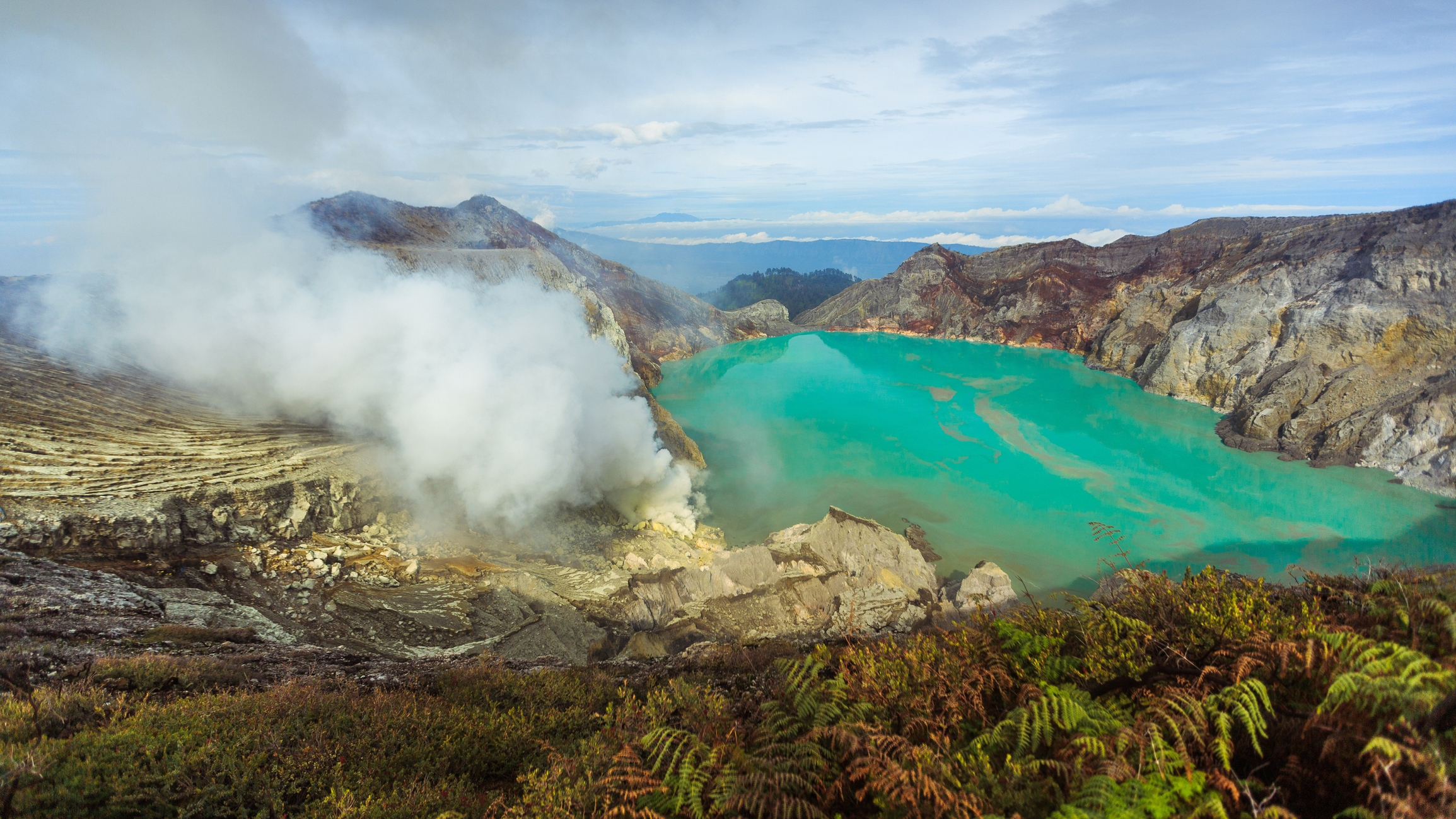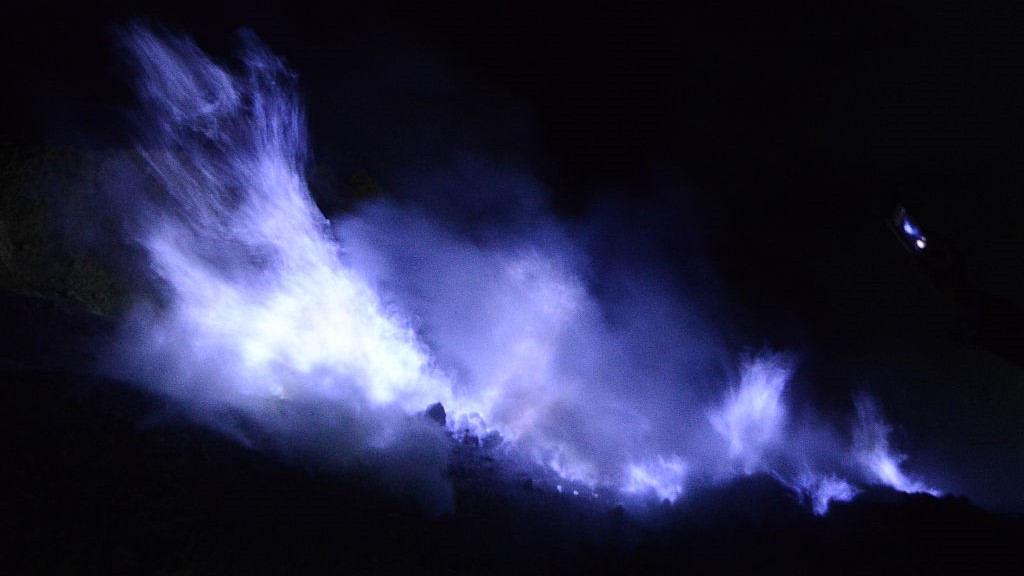
Name: Kawah Ijen crater lake
Location: East Java, Indonesia
Coordinates: -8.05796494233988, 114.2415831801649
Why it's incredible: The volcano's crater lake is as acidic as car battery acid, yet it still hosts life.
Kawah Ijen is a giant, active volcano on the island of Java with a crater that contains the world's largest acidic lake. The water has a pH lower than 0.3 in parts of the lake where hydrothermal fluids rise up from inside Earth's crust, filling the water with minerals, as well as sulfuric and hydrochloric acids.
A pH of 0.3 is similar to that of battery acid, a solution that creates and stores electrical energy in cars. For comparison, gastric acid has a pH between 1.5 and 2, and lemon juice scores between 2 and 3. But despite conditions that would dissolve human skin instantly, Kawah Ijen's acidic lake is home to a small community of microbes, according to a 2006 study.
Kawah Ijen crater lake's bluish-green color is so bright, it's visible from space.The minerals and acids in the crater lake give the water its seemingly artificial turquoise color. They originate from a chamber of red-hot magma below the volcano, which last erupted in 1999. The volcano stands 9,085 feet (2,769 meters) tall and the crater measures 2,300 by 2,625 feet (700 by 800 m) wide.

'Bitter water' river
Rain regularly replenishes Kawah Ijen's acidic lake, but the new water immediately turns corrosive due to vents that release gas continuously at the bottom of the lake. When the crater is full, water overflows into a stream on the volcano's west side that feeds into the Banyupahit River basin — the name of the river means "bitter water" in the Javanese language.
If the crater lake's extremely acidic waters weren't eerie enough, Kawah Ijen also emits sulfurous gases that catch fire when they come into contact with oxygen in Earth's atmosphere. When the gases ignite above the volcano, they produce electric blue flames that mostly go unnoticed during the day, but create an astonishing spectacle at night.
Often, the sulfur in these gases condenses after catching light, forming a liquid that flows a short distance along the volcano before solidifying into yellow deposits. Local people mine these deposits, breaking off chunks of sulfur which they sell to a sugar refinery in the area that uses them to remove color impurities from the sugar.
There is considerable risk involved in these mining operations, according to the website Geology.com, including harm from poisonous sulfur gases, regular gas explosions and dangerous paths up and down the volcano.
Discover more incredible places, where we highlight the fantastic history and science behind some of the most dramatic landscapes on Earth.







